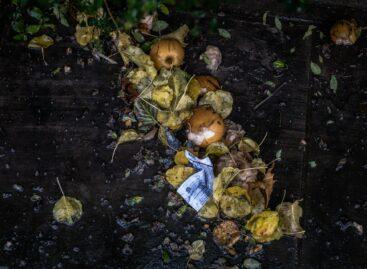Magazine: Only the purchasing power is missing
Wineries are slowly but steadily responding to market needs and the new-style wines (e.g. fresh, reductive-technology ones) that they develop are slowly getting accepted by the market – revealed Krisztián Kathona, purchasing director of wine trading company Wine Network. He added that consumers are more and more open to trying new products and packaging formats. Wine drinkers are more increasingly knowledgeable about wine.
Kurt Taschner, owner of Taschner Wine and Champagne House Kft. is a bit less optimistic. His experience is that Hungarian consumers are still looking for wines that represent constant good quality for everyday consumption. There are still few wine gourmets and even those wine lovers who have the money buy rather unexciting products. Ákos Kamocsay, co-owner and chief winemaker of Hilltop Neszmély Zrt., told that the 2015 vintage was better than in 2014, consequently more good wines can be found in shops and there is a large selection of products available. Sales of the medium-priced Hilltop range grew by two-digit numbers.
János Frittmann, co-owner of Frittmann Brothers Kft. is of the opinion that the market keeps changing. These days a lot of consumers know what kind of wine they want. His view is that in wine consumption a lot depends on trust. According to Gergő Gelencsér, chief winemaker of Canter Wine House and Nyilas Winery, selling wine isn’t an easy task. Foreign produced bulk wine has a strong influence in the Hungarian market. Small Hungarian wineries can’t really compete with these products. He told that competition is fierce in the category of quality wine.
Ferenc Szlávik, head of the top gastronomy and wine division at Zwack Izabella Wine Shop, sees the same trends in the bottled wine market – at least in the gastronomy and retail segments where they are present – as in the last few years. As regards the wine market in total, sales of bulk wine and wine put in large plastic bottles are increasing. Many famous and popular wineries target this segment with their basic wines. Light, fragrant white wines (Irsai Olivér) and rosés are the most preferred products of Hungarian consumers. József Bock, managing director of Bock Cellar Kft. told our magazine that no matter what the price category is or consumer preferences are, wine buyers are influenced by advertisements or the words they hear at a wine tasting.
Mr Kamocsay underlined that the general quality of Hungarian wines is improving, but the price-value ratio doesn’t always reflect the real differences in quality. More and more people know a lot of things about wine, but the number of those with enough money to buy higher-quality and special products isn’t increasing fast enough. The chief winemaker explained to us that it is a big task for them and Hilltop Neszmély’s retailer partners to find the ideal product prices in promotional and in non-promotional periods. He believes in the power of the right in-store product placement.
Mr Kathona talked to Trade magazine about how the ties between quality and price got closer to each other than they were 10 years ago, when the more expensive a wine was, the bigger prestige it had. He senses the price war in the market, which unfortunately leads to the conquest of volume-obsessed wineries to the detriment of those wineries that don’t make compromises in quality. Mr Frittmann’s experience is that retailers think the HUF 1,000 per bottle threshold is of key importance in sales: this is the reason why they are offering HUF 1,200-1,600 wines for HUF 850-1,000 in promotional periods.
Mr Taschner thinks it is a good sign that important groups of consumers are now willing to spend more on a bottle of wine than the magical HUF 1,000, but at the same time it is sad that they don’t wish to spend even more than this. Mr Gelencsér opines that there are many good bottled wines available in the market and consumers tend to decide which one to buy based on their price-value ratio. He thinks that the HUF 1,000 category is a very difficult and competitive one.
According to Mr Szlávik, their strategy is to only work with wineries that focus on quality. About the market he told that 60 percent of consumers spend less than HUF 1,000 on a bottle of wine, while 28 percent are paying HUF 1,000-2,000 for a bottle. This situation won’t change until the purchasing power of Hungarians is at the current level. As a result of this, many wineries tend to produce wines which are priced in a fashion that consumers can allow buying them. However, this strategy may create a situation where winemakers don’t have enough revenue for investing in development. Zwack Open Exclusive, targets exclusively the trade and it is also organised three times a year. Within the framework of this, a winemaker gives a 1.5-2 hour presentation and there is a tasting session too. At programmes like this, a connection can be established between producers, wine traders and consumers.
János Frittmann reckons the market keeps going in the direction of fruity wines. Rosés are still popular and among red wines the popularity of the Blaufrankisch variety is on the rise. Kurt Taschner also spoke about great demand for rosé wines and still sees more potential in white grape varieties such as Irsai Olivér, Zenith and Grüner Veltliner. Gergő Gelencsér is of the opinion that Irsai Olivér wines are still trendy and demand is also high for rosé wines. A certain group of consumers now wants grape-characteristic, very fruity rosés with a bit higher alcohol content.
Krisztián Kathona told: Irsai Olivér and rosés are a constant success, and sparkling wines are also becoming fashionable – although at a slower pace winemakers have hoped for. Among red wines demand is getting smaller for grand red wines as people tend to go for lighter, fruitier reds. Ákos Kamocsay believes that most wine buyers want experiences and no risks, therefore reliable winemakers and wines, plus affordable prices, are of utmost importance. This year the Kamocsay Premium range was expanded with completely new varieties. Ferenc Szlávik opines that consumers’ main preferences are (in this order): price, Hungarian wine, wine region, grape variety. The only exception is fragrant whites and rosés, which basically live their own lives.
Related news
Related news
About two million tons of food waste is produced in Hungary every year
The former president of the republic, János Áder, chairman of…
Read more >“To the bin with food waste” – the Nébih No Leftovers program announces a poster design competition
On the occasion of the Sustainability Theme Week, the program…
Read more >Paper packaging may not be the best
The environmental effects of packaging are receiving more and more…
Read more >




